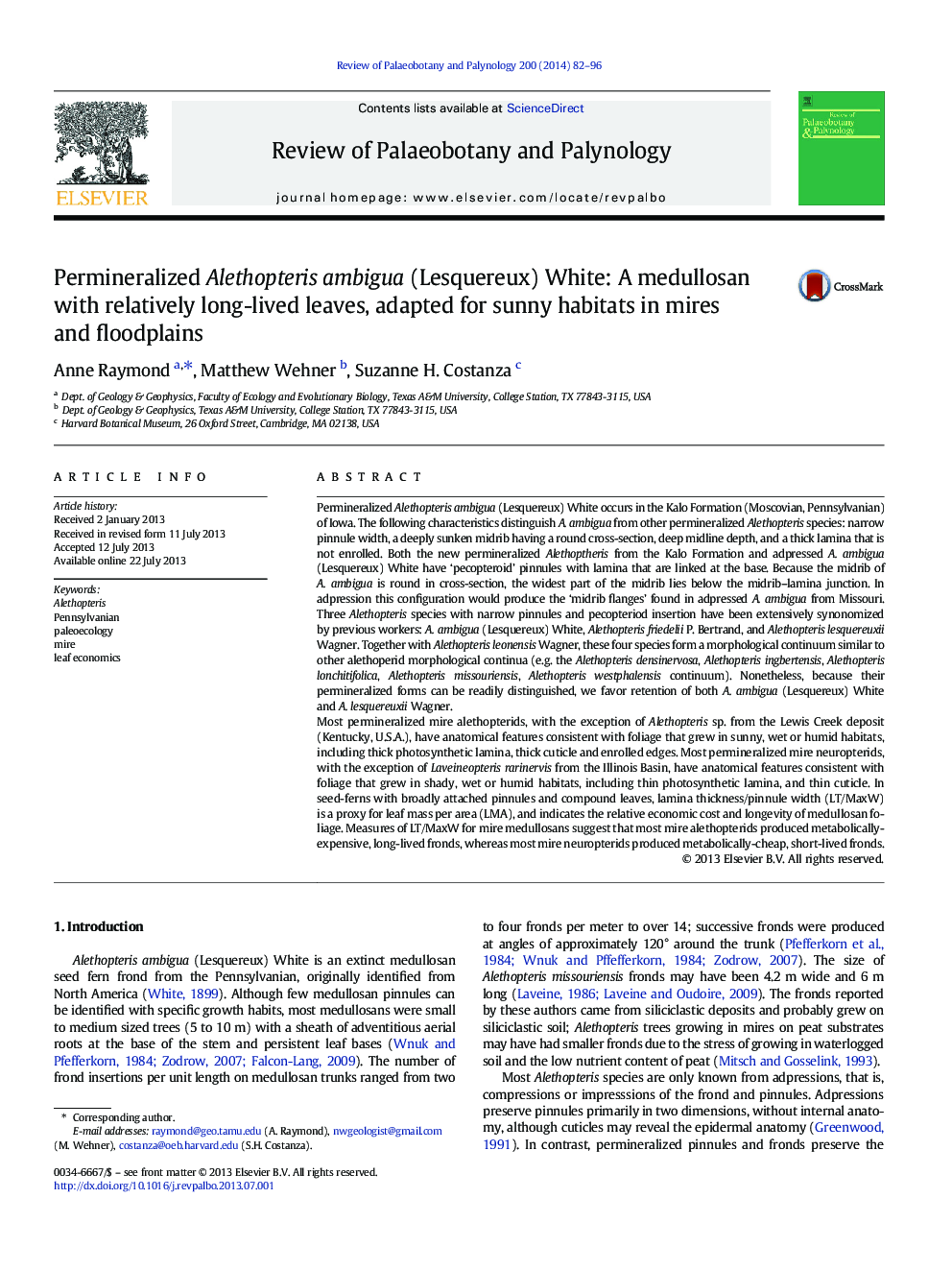| Article ID | Journal | Published Year | Pages | File Type |
|---|---|---|---|---|
| 6448774 | Review of Palaeobotany and Palynology | 2014 | 15 Pages |
Abstract
Most permineralized mire alethopterids, with the exception of Alethopteris sp. from the Lewis Creek deposit (Kentucky, U.S.A.), have anatomical features consistent with foliage that grew in sunny, wet or humid habitats, including thick photosynthetic lamina, thick cuticle and enrolled edges. Most permineralized mire neuropterids, with the exception of Laveineopteris rarinervis from the Illinois Basin, have anatomical features consistent with foliage that grew in shady, wet or humid habitats, including thin photosynthetic lamina, and thin cuticle. In seed-ferns with broadly attached pinnules and compound leaves, lamina thickness/pinnule width (LT/MaxW) is a proxy for leaf mass per area (LMA), and indicates the relative economic cost and longevity of medullosan foliage. Measures of LT/MaxW for mire medullosans suggest that most mire alethopterids produced metabolically-expensive, long-lived fronds, whereas most mire neuropterids produced metabolically-cheap, short-lived fronds.
Keywords
Related Topics
Physical Sciences and Engineering
Earth and Planetary Sciences
Palaeontology
Authors
Anne Raymond, Matthew Wehner, Suzanne H. Costanza,
